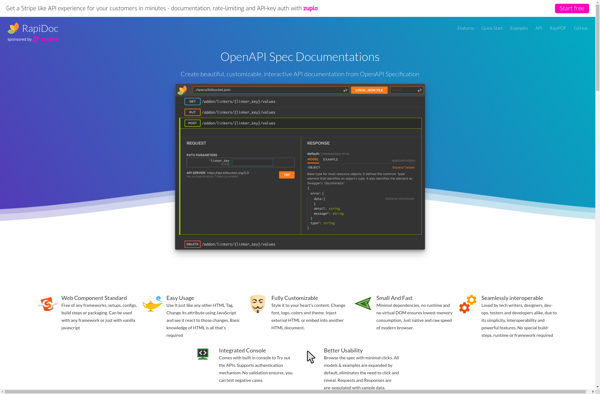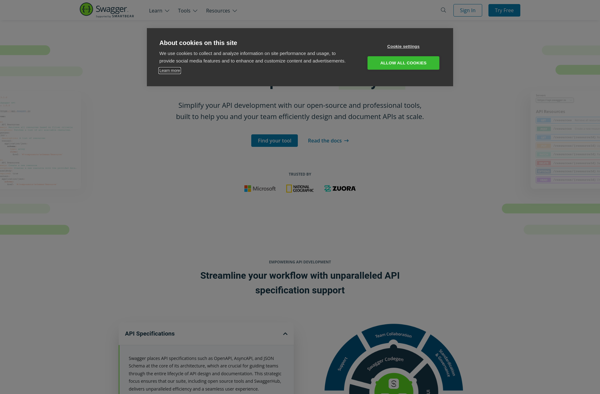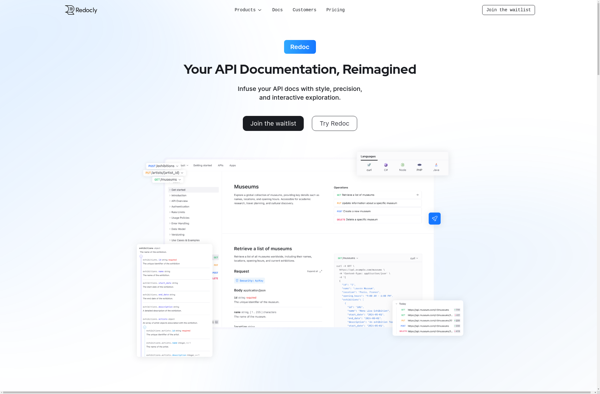RapiDoc

RapiDoc: Open-Source API Documentation Generator
RapiDoc is an open-source API documentation generator that helps developers quickly create API documentation from OpenAPI specifications. It has a simple yet powerful interface that allows customizing look and feel, trying out API calls, and integrating authentication.
What is RapiDoc?
RapiDoc is an open-source API documentation generator that helps developers quickly create interactive API documentation from OpenAPI (formerly known as Swagger) specifications. It has an intuitive graphical interface that reads your OpenAPI spec file and generates a documentation website with a unique design and custom branding.
Some key features of RapiDoc include:
- Clean, responsive UI design that is customizable via themes
- Try-it-out functionality to call and test API endpoints from the docs
- Supports OpenAPI 3.0 specs
- Authentication integration using OAuth2, Basic Auth, API Keys
- Code samples in various programming languages
- Native Docker Image to simplify deployment
- Plugin architecture to extend functionality
- Dark mode
- Github Actions/Docker Compose scripts included
- Localized in 15+ languages
RapiDoc solves many common pain points developers face in creating and maintaining API docs. Its graphical editor simplifies customization and eliminates the need to write code. The ability to import OpenAPI specs eliminates duplication of effort. Interactive testing from docs reduces dependencies on a separate testing environment. Overall, RapiDoc streamlines API documentation generation and improves developer experience.
RapiDoc Features
Features
- Auto-generates API documentation from OpenAPI/Swagger specs
- Supports OpenAPI 3.0 specs
- Customizable themes and styles
- Live API console to test endpoints
- Authentication support via OAuth2, Basic Auth, API Keys
- Code samples in multiple languages
- Search and filtering
- Responsive design and mobile support
- Open-source and self-hosted
Pricing
- Open Source
Pros
Cons
Official Links
Reviews & Ratings
Login to ReviewThe Best RapiDoc Alternatives
Top Development and Api Documentation and other similar apps like RapiDoc
Swagger.io

Redocly

Bump.sh
